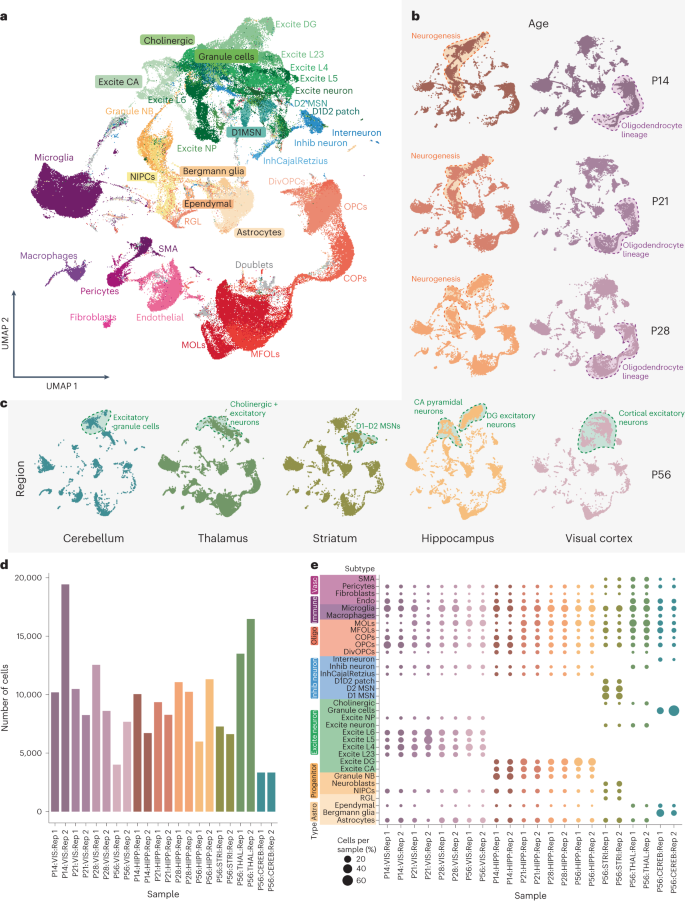2024-04-09 ウースター工科大学(WPI)
<関連情報>
- https://www.wpi.edu/news/announcements/wpi-part-gene-splicing-research-published-nature-neuroscience
- https://www.nature.com/articles/s41593-024-01616-4
単一細胞のロングリードシーケンスに基づくマッピングにより、発生中および成体マウスおよびヒトの脳における特殊なスプライシングパターンが明らかになる Single-cell long-read sequencing-based mapping reveals specialized splicing patterns in developing and adult mouse and human brain
Anoushka Joglekar,Wen Hu,Bei Zhang,Oleksandr Narykov,Mark Diekhans,Jordan Marrocco,Jennifer Balacco,Lishomwa C. Ndhlovu,Teresa A. Milner,Olivier Fedrigo,Erich D. Jarvis,Gloria Sheynkman,Dmitry Korkin,M. Elizabeth Ross & Hagen U. Tilgner
Nature Neuroscience Published:09 April 2024
DOI:https://doi.org/10.1038/s41593-024-01616-4

Abstract
RNA isoforms influence cell identity and function. However, a comprehensive brain isoform map was lacking. We analyze single-cell RNA isoforms across brain regions, cell subtypes, developmental time points and species. For 72% of genes, full-length isoform expression varies along one or more axes. Splicing, transcription start and polyadenylation sites vary strongly between cell types, influence protein architecture and associate with disease-linked variation. Additionally, neurotransmitter transport and synapse turnover genes harbor cell-type variability across anatomical regions. Regulation of cell-type-specific splicing is pronounced in the postnatal day 21-to-postnatal day 28 adolescent transition. Developmental isoform regulation is stronger than regional regulation for the same cell type. Cell-type-specific isoform regulation in mice is mostly maintained in the human hippocampus, allowing extrapolation to the human brain. Conversely, the human brain harbors additional cell-type specificity, suggesting gain-of-function isoforms. Together, this detailed single-cell atlas of full-length isoform regulation across development, anatomical regions and species reveals an unappreciated degree of isoform variability across multiple axes.


